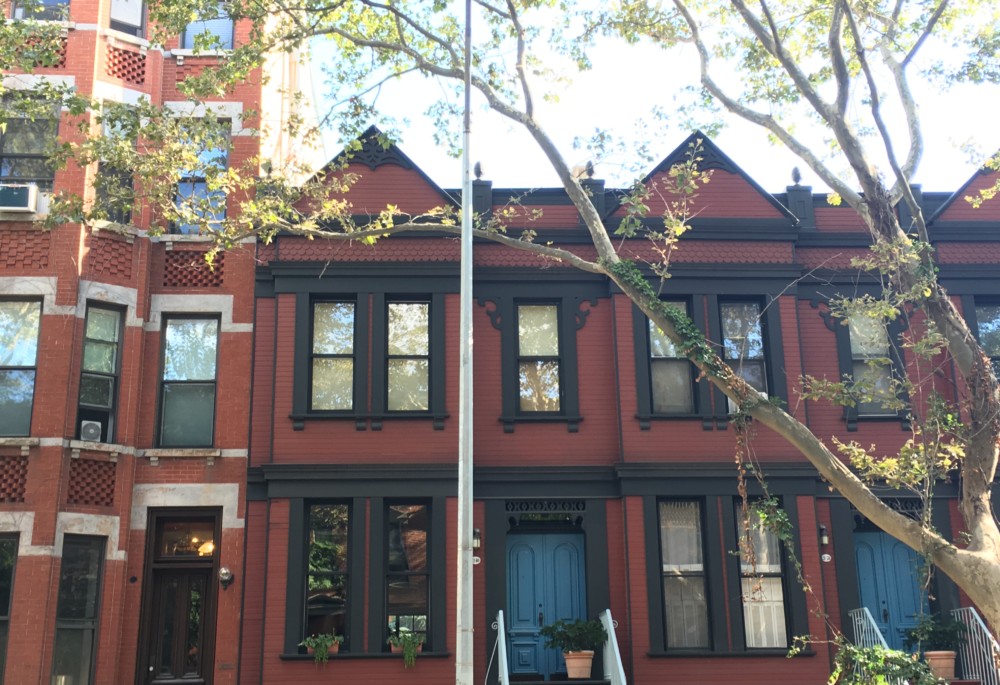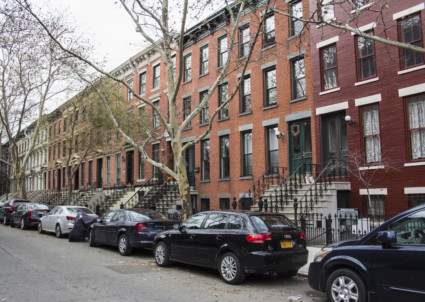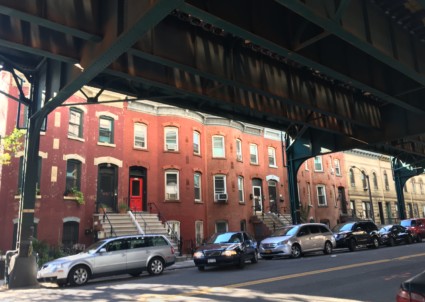Hunters Point Historic District
The Landmarks Preservation Commission's (LPC) 1968 designation report describes the Hunters Point Historic District as “a notable residential area...which retains, on both sides of the street, a feeling of unity and repose, little changed since it was first built" that "serves as a microcosm of the domestic architecture of the last quarter of the Nineteenth Century." Roughly spanning the block of 45th Avenue between 21st and 23rd Streets, this small district contains examples of the Italianate, French Second Empire, Neo-Grec and other architectural styles common in the second half of the 19th century. Originally part of the Van Alst farm, the street was subdivided for residential development in the 1870s and its elegant stone houses came to be known as "White Collar Row." One of its most notable residents was "Battle Axe" Gleason, the mayor of Long Island City who famously chopped down a fence erected by the Long Island Rail Road that prevented pedestrians from crossing 2nd Street without a railroad ticket. The street changed as nearby commercial and industrial activity increased, as well as with the arrival of the elevated railway along 23rd Street in 1916. As the old families fled the noise from the trains, the houses were subdivided and began to attract theatrical performers who were drawn to the area for its easy subway access to the Broadway theaters in Manhattan. Luckily, though, the area managed to retain its character-defining features and continues to evoke the quiet tranquility that drew the first residents here in the 1870s.
The Hunters Point Historic District was listed on the State and National Register of Historic Places in 1973 and was designated a NYC Historic District in 1968.


